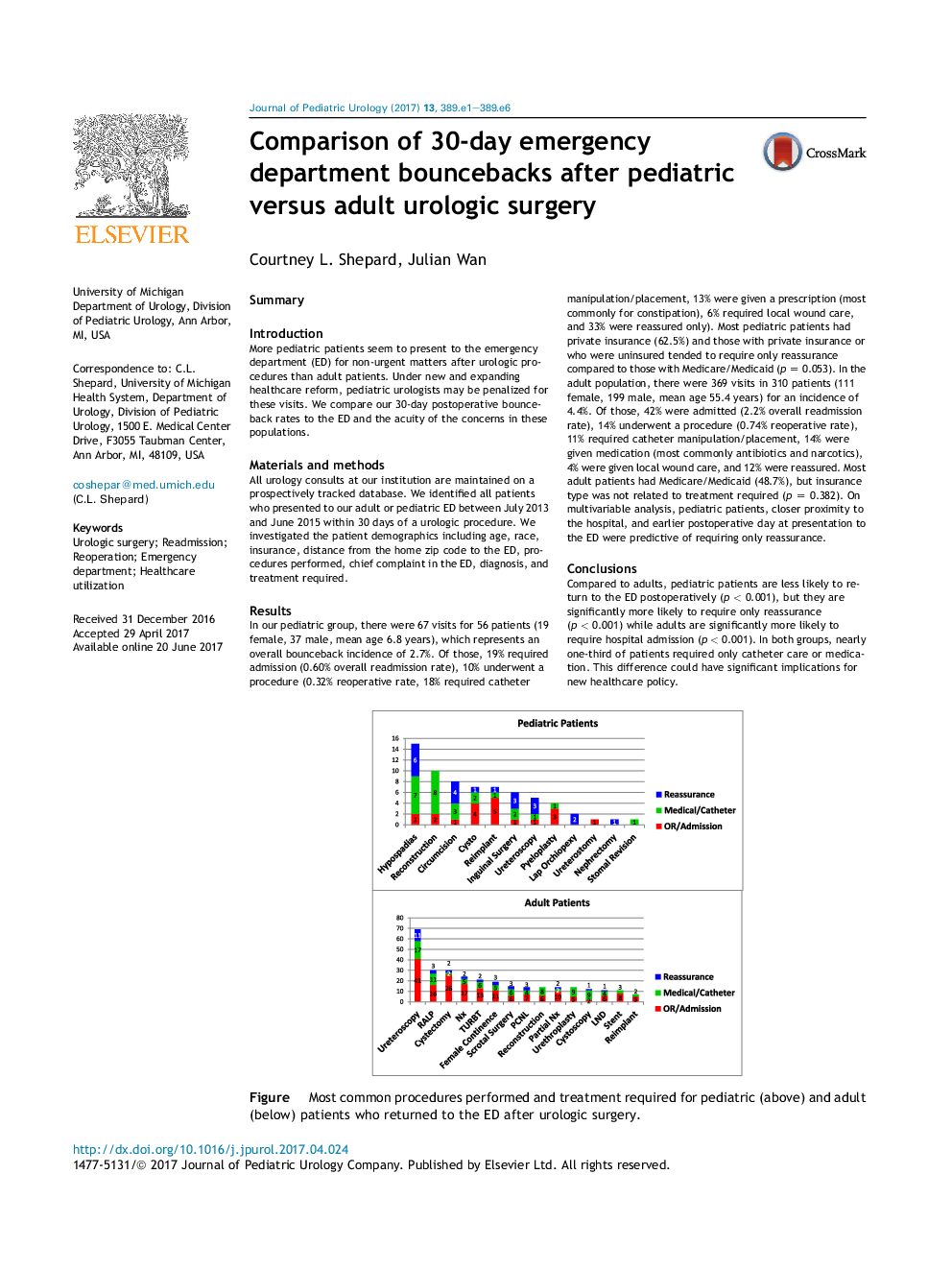| کد مقاله | کد نشریه | سال انتشار | مقاله انگلیسی | نسخه تمام متن |
|---|---|---|---|---|
| 5718557 | 1607135 | 2017 | 6 صفحه PDF | دانلود رایگان |
SummaryIntroductionMore pediatric patients seem to present to the emergency department (ED) for non-urgent matters after urologic procedures than adult patients. Under new and expanding healthcare reform, pediatric urologists may be penalized for these visits. We compare our 30-day postoperative bounceback rates to the ED and the acuity of the concerns in these populations.Materials and methodsAll urology consults at our institution are maintained on a prospectively tracked database. We identified all patients who presented to our adult or pediatric ED between July 2013 and June 2015 within 30 days of a urologic procedure. We investigated the patient demographics including age, race, insurance, distance from the home zip code to the ED, procedures performed, chief complaint in the ED, diagnosis, and treatment required.ResultsIn our pediatric group, there were 67 visits for 56 patients (19 female, 37 male, mean age 6.8 years), which represents an overall bounceback incidence of 2.7%. Of those, 19% required admission (0.60% overall readmission rate), 10% underwent a procedure (0.32% reoperative rate, 18% required catheter manipulation/placement, 13% were given a prescription (most commonly for constipation), 6% required local wound care, and 33% were reassured only). Most pediatric patients had private insurance (62.5%) and those with private insurance or who were uninsured tended to require only reassurance compared to those with Medicare/Medicaid (p = 0.053). In the adult population, there were 369 visits in 310 patients (111 female, 199 male, mean age 55.4 years) for an incidence of 4.4%. Of those, 42% were admitted (2.2% overall readmission rate), 14% underwent a procedure (0.74% reoperative rate), 11% required catheter manipulation/placement, 14% were given medication (most commonly antibiotics and narcotics), 4% were given local wound care, and 12% were reassured. Most adult patients had Medicare/Medicaid (48.7%), but insurance type was not related to treatment required (p = 0.382). On multivariable analysis, pediatric patients, closer proximity to the hospital, and earlier postoperative day at presentation to the ED were predictive of requiring only reassurance.ConclusionsCompared to adults, pediatric patients are less likely to return to the ED postoperatively (p < 0.001), but they are significantly more likely to require only reassurance (p < 0.001) while adults are significantly more likely to require hospital admission (p < 0.001). In both groups, nearly one-third of patients required only catheter care or medication. This difference could have significant implications for new healthcare policy.353Figure. Most common procedures performed and treatment required for pediatric (above) and adult (below) patients who returned to the ED after urologic surgery.
Journal: Journal of Pediatric Urology - Volume 13, Issue 4, August 2017, Pages 389.e1-389.e6
